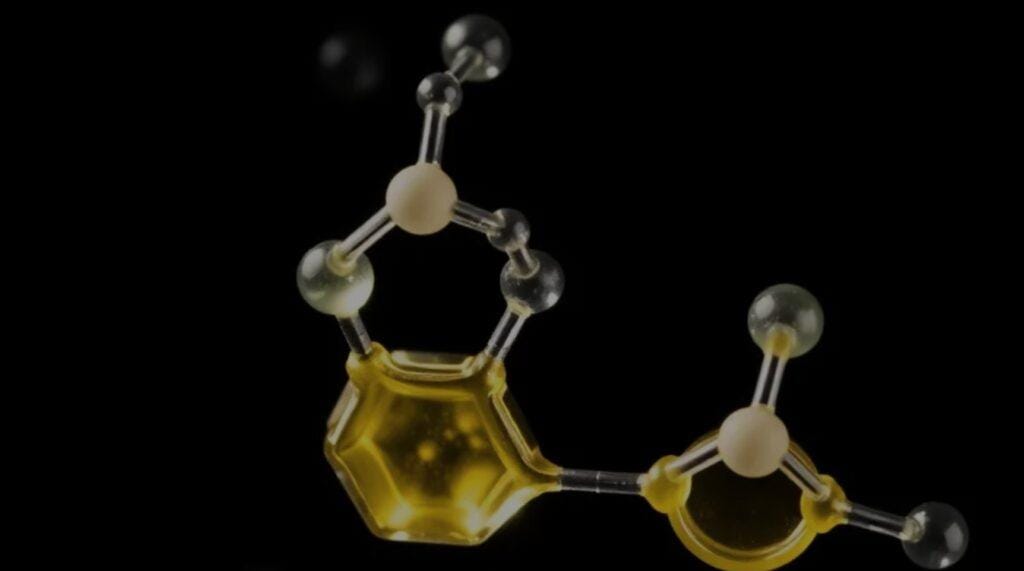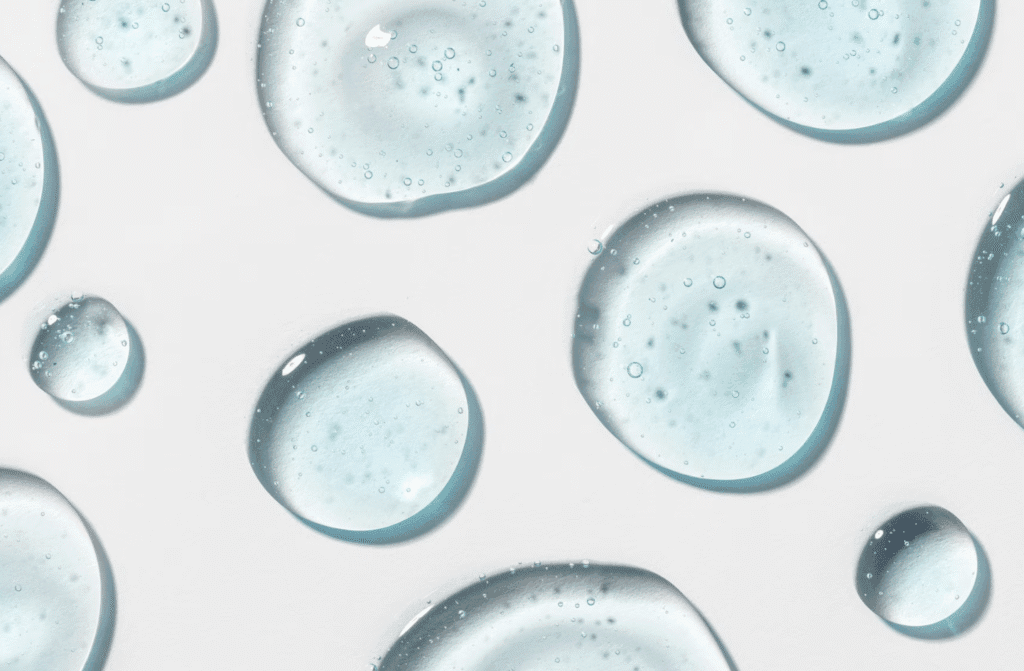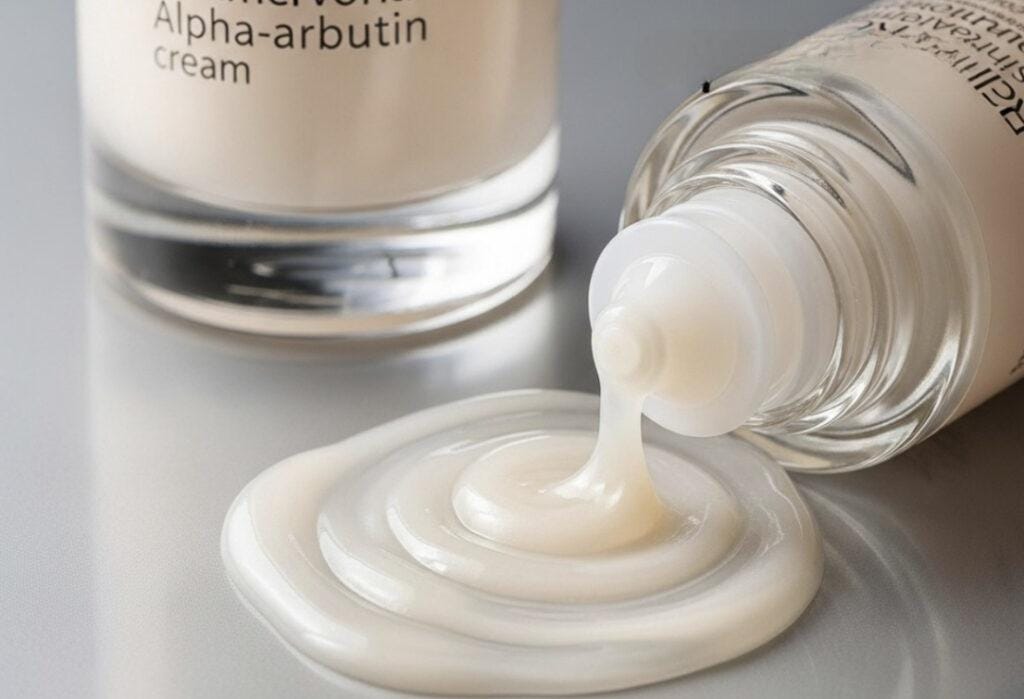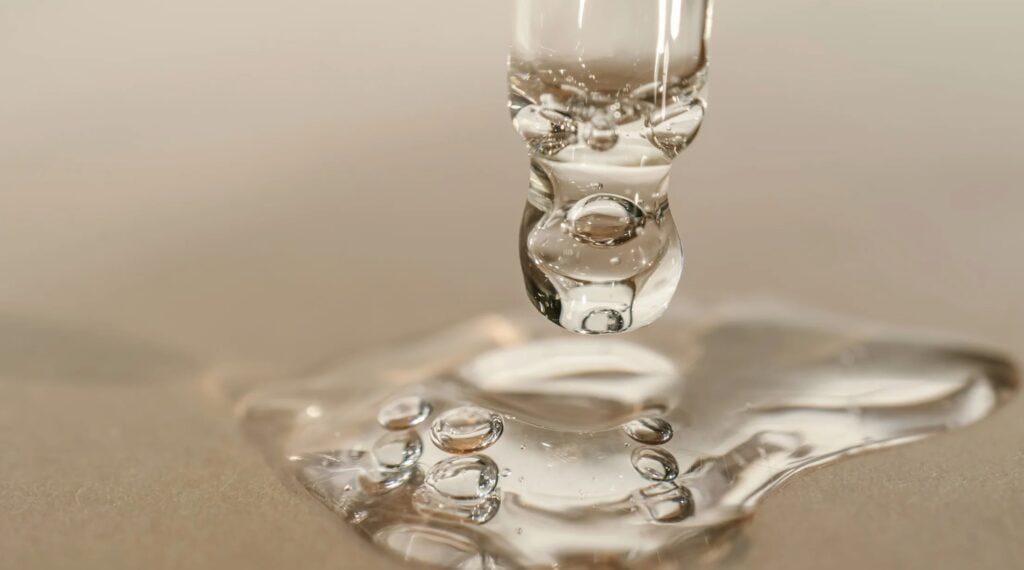Glycolic Acid is one of the most researched skin care ingredients. This little alpha hydroxy acid (AHA) packs a powerful punch and has changed so many skin woes that it might even transform your glycolic acid skincare routine.
If you’ve ever asked yourself why glycolic acid for skincare is such a hit, you’re not alone. Glycolic Acid is the smallest molecule in the AHA family, allowing for easy and fast absorption. It can penetrate skin and go beneath its deeper layers for complete exfoliation, decrease the appearance of fine lines, Unclog pores, and improve skin’s overall texture parties and helps to increase skin firmness. This water-soluble dynamo, extracted from sugar cane, does wonders when used on the skin as it is virtually a micro sponge that will pull water to the skin and exfoliate dead skin cells.
The reason glycolic acid benefits are so impressive comes down to one special feature: It works in two different ways. As it gently removes the surface layer of skin (stratum corneum), it also encourages the production of collagen and hyaluronic acid in deeper dermal layers. This one-two punch targets both immediate texture issues and long-term signs of aging, which is why dermatologists have been recommending it for years.
But before you start delving into how to use glycolic acid, it’s important to note that not all formulas are created equally. From professional peels to at-home toners, concentrations may range from a mere 5% to medical-grade 70% solutions. When it comes to glycolic acid for beginners, taking it slow will enable you to enjoy the benefits of this game-changing ingredient without risking excess irritation.
Did You Know?
The name glycolic acid is derived from “glycol,” for the sugar cane from which it originates, and “lye,” the alkaline solution used to make it. Its chemical name is hydroxyacetic acid, demonstrating that it is a basic compound.
Also Read: Azelaic Acid in Skincare: A Best way to Treats Acne, Redness & Dark Spots
What is Glycolic Acid?
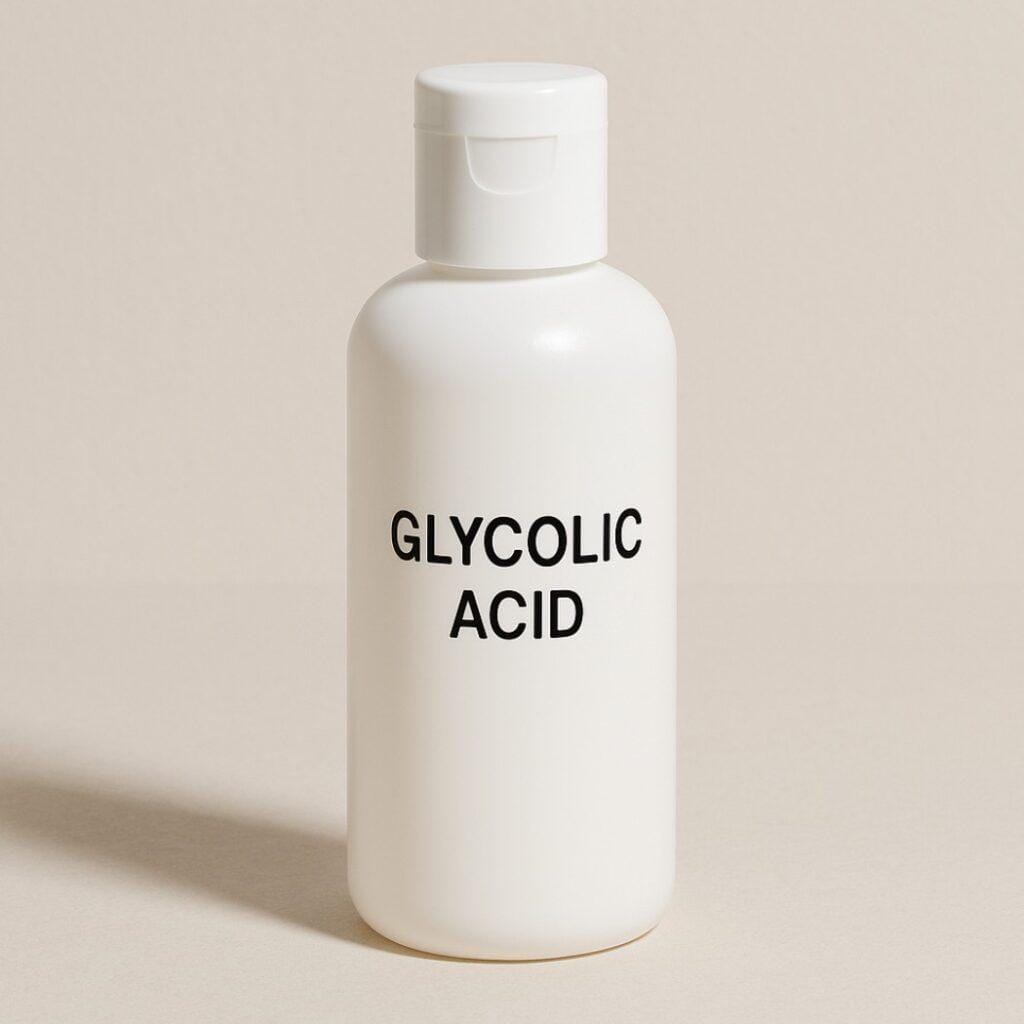
Glycolic acid is a member of the alpha hydroxy acid (AHA) family—the natural acids found in foods like citrus and milk, known for the exfoliating properties they have on skin. AHA’s molecular weight is also what distinguishes glycolic acid, as the smallest AHA molecule at just two carbon atoms, it’s simply the smallest. Allow it to penetrate the skin more effectively than its cousins (looking at you, lactic and mandelic acid), and it’s remarkably efficient at delivering glycolic acid awesomeness.
Glycolic acid is found in sugar cane in nature, but the form we use in skin care is usually made in labs, so that the ingredient is both pure and the formula is consistent. This chemical process means manufacturers can closely regulate concentration levels and pH, both of which strongly correlate with efficacy, and also the potential for irritation of glycolic acid to the skin.
Forms of Glycolic Acid for Skincare
There are a few different ways you can use glycolic acid, and that’s also one of the reasons how to use glycolic acid can be confusing because it comes in so many formulas. Not every vehicle neutralizes the active ingredient the same way, and some are better for certain skin types or concerns than others.
- Cleansers (3-10%): Perfect for the newcomer to glycolic acid, these rinse-off formulas make it easy to experience exfoliation with little to no irritation. They’re great for building up skin tolerance.
- Toners (5-10%): These stay-on treatments offer daily exfoliation and help keep the skin’s pH balanced. Great for building up to stronger treatments.
- Serums (10-20%): The glycolic acid routine workhorses, these concentrated treatments deliver those smooth skin results you love.
- Peels (20-70%): Application and neutralization sensitive and delicate professional treatments. Best performed by dermatologists.
Key Benefits for Your Skin
If there were a skincare enthusiast wish list, the advantages of glycolic acid would read like that list. Here’s what consistent use can do for you:
- Refined Skin Texture: It provides a more even looking skin tone, and helps to reduce the appearance of fine lines, such as crow’s feet, and the look of the hoary structure of it.
- Brighter, More Even Tone: Regular exfoliation will remove the top layer of dead skin cells, as well as fading pigmentation and preventing clumping of pigment that can cause discolouration.
- Reduced Appearance of Fine Lines: The skin-plumping effects of how to use glycolic acid can plump and smooth fine lines over time.
- Improved Product Absorption: By peeling away and loosening the barrier of dead cells, other skincare ingredients can get in more effectively.
- Gentle Acne Treatment: It’s non-drying unlike benzoyl peroxide, and keeps pores clear.
How to Incorporate It into Your Routine
Knowing how to use glycolic acid correctly is the difference between glowing results and gnarly skin. Follow these steps, especially glycolic acid for beginners.
- Step 1: Start Slow: Start with rinse-off products (cleansers) 2-3x a week, and then move to leave-on products.
- Step 2: Gradual Increase: Once you have built tolerance, use a 5-8% toner/serum every other night.
- Step 3: Listen to Your Skin: If redness or stinging occurs, reduce the frequency or concentration.
- Step 4: Always Follow With Moisturizer: Keep hydrated Seriously, staying hydrated is so important when you’re using glycolic acid on skin.
- Step 5: Sunscreen is Non-Negotiable: AHAs can increase the skin’s sensitivity to the sun so ensure you apply a high factor broad spectrum SPF 30+ every morning.
My Pro Tip: Be sure to patch test any new glycolic acid products on your jawline prior to applying them on your entire face. Wait 24 hours to test for redness and irritation.
Best Ingredients to Pair
Glycolic Acid for skin can be combined with other ingredients to accelerate its efficacy. Some good pairings include:
- Hyaluronic Acid: Hyaluronic Acid is amazing for plumping and hydrating dry skin.
- Niacinamide: Niacinamide can brighten skin and reduce inflammation when used correctly.
- Vitamin C: Vitamin C is Good when used on an alternate day; it adds glow and improves skin tone.
- Peptides: Peptides enhance anti-aging effects
What to Avoid Mixing With
Although the pros of glycolic acid are numerous, there are specific ingredient pairings that can irritate sensitive skin or ultimately minimize benefits. Approach these with caution:
- Retinoids: Both are strong exfoliants — you shouldn’t use them together. Alternate nights instead.
- Physical Scrubs: Mechanical exfoliation paired with chemical exfoliation can lead to irritation & upset your moisture barrier.
- Vitamin C (L-ascorbic acid): Not working when mixed because they have different pH levels.
- Benzoyl Peroxide: May be too drying and irritating when paired with glycolic acid for skin.
- Salicylic Acid: Salicylic Acid over-exfoliates and may irritate.
My Quick Tip: If in doubt, space out strong actives at least 10 minutes from one another or at different times of day.
Side Effects to Be Aware Of
While how to use glycolic acid safely is straightforward, being aware of potential reactions helps prevent problems:
Side Tips to follow
- Normal during the first few uses as skin adjusts. It should subside within 10-15 minutes.
- Those with eczema, rosacea flare-ups, or active sunburns should pause use until skin heals.
Side Effects to Know
- Dryness or flakiness
- Tingling or stinging
- Sun sensitivity
- Breakouts, when first introduced
Product Recommendations
Here, we break down our favorites, which include standout glycolic acid benefits suited to various skin types and budgets:
- The Ordinary Glycolic Acid 7% Toning Solution: Ideal for all skin types; newbie-friendly. Buy here, and prepare for soft, smooth, glowy skin.
- Pixi Glow Tonic: It has aloe vera, gentle yet still effective. Shop here to elevate your skin.
- Paula’s Choice Skin Perfecting 8% AHA Gel: A little stronger; best for advanced users. Buy here for enhanced exfoliation and smoother skin.
- Murad AHA/BHA Exfoliating Cleanser: Does the double duty of two acids for a thorough scrubbing. Shop here to see brighter, healthier-looking skin.
Common Myths Debunked
Myth: It Thins Your Skin
Truth: When stripping away old cells, glycolic acid for skin prompts collagen to fatten the dermis with new ones over time.
Wrapping Up: Add into your skincare routine
As we’ve discussed, using glycolic acid for skin has the power to change everything, so long as it’s used correctly. If you’re fighting blemishes, dry skin, or the first whispers of aging, this all-purpose AHA is worth adding to your cosmetics bag.
The secret to realizing glycolic acid benefits is through a slow and steady introduction—the case with glycolic acid for beginners. Begin with lower concentrations and observe how your skin reacts to the treatment before gradually increasing your tolerance. Recall that moderate use across months is more successful than aggressive short-term use.
The perfect glycolic acid regimen should refresh your skin, not rub it the wrong way. If you’re ever in doubt, see a dermatologist who can help tailor your skin care regimen to your particular skin type and concerns.
FAQs
Can you use glycolic acid every day?
This is entirely up to your skin’s tolerance and the product’s strength. Begin by applying the serum twice a week for the first two weeks glycolic acid at a concentration of 5-7%.
How long does it take for glycolic acid to work?
Everyone sees measurable changes in skin texture within 1-2 weeks, but they can also be seen in a much shorter time if used consistently in your glycolic acid skincare routine. For larger issues like hyperpigmentation or deeper wrinkles, give it 8-12 weeks with consistent use..
Is glycolic acid good for acne scars?
Yes! Regular use of glycolic acid on the skin has been shown to gradually diminish the appearance of post-acne marks by speeding the shedding (desquamation) of existing surface cells.

